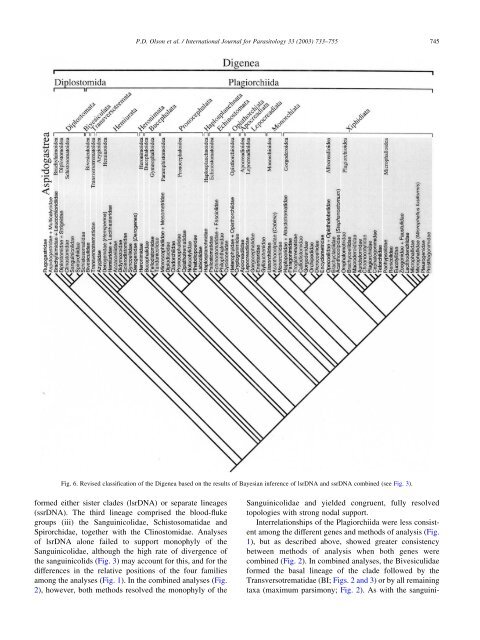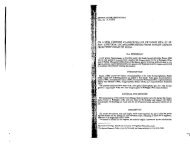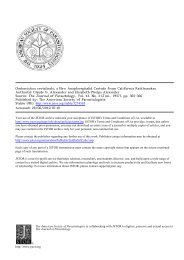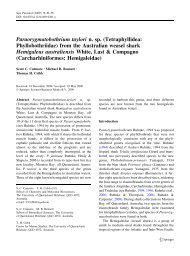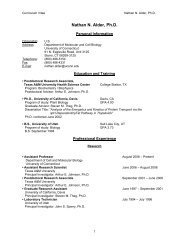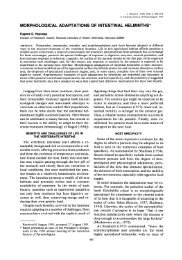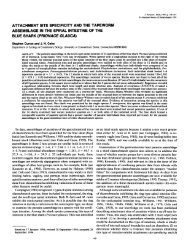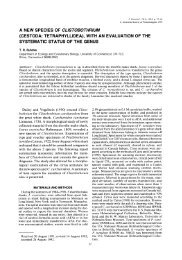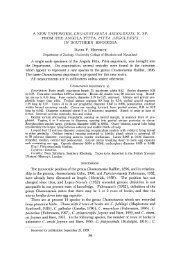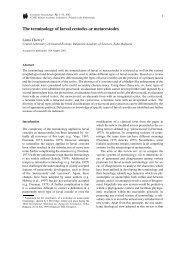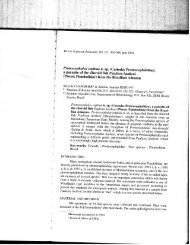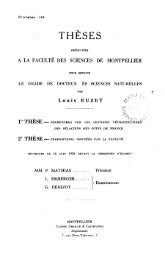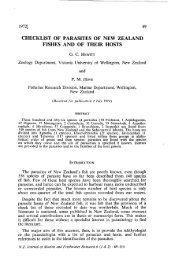Phylogeny and classification of the Digenea (Platyhelminthes ...
Phylogeny and classification of the Digenea (Platyhelminthes ...
Phylogeny and classification of the Digenea (Platyhelminthes ...
You also want an ePaper? Increase the reach of your titles
YUMPU automatically turns print PDFs into web optimized ePapers that Google loves.
P.D. Olson et al. / International Journal for Parasitology 33 (2003) 733–755 745Fig. 6. Revised <strong>classification</strong> <strong>of</strong> <strong>the</strong> <strong>Digenea</strong> based on <strong>the</strong> results <strong>of</strong> Bayesian inference <strong>of</strong> lsrDNA <strong>and</strong> ssrDNA combined (see Fig. 3).formed ei<strong>the</strong>r sister clades (lsrDNA) or separate lineages(ssrDNA). The third lineage comprised <strong>the</strong> blood-flukegroups (iii) <strong>the</strong> Sanguinicolidae, Schistosomatidae <strong>and</strong>Spirorchidae, toge<strong>the</strong>r with <strong>the</strong> Clinostomidae. Analyses<strong>of</strong> lsrDNA alone failed to support monophyly <strong>of</strong> <strong>the</strong>Sanguinicolidae, although <strong>the</strong> high rate <strong>of</strong> divergence <strong>of</strong><strong>the</strong> sanguinicolids (Fig. 3) may account for this, <strong>and</strong> for <strong>the</strong>differences in <strong>the</strong> relative positions <strong>of</strong> <strong>the</strong> four familiesamong <strong>the</strong> analyses (Fig. 1). In <strong>the</strong> combined analyses (Fig.2), however, both methods resolved <strong>the</strong> monophyly <strong>of</strong> <strong>the</strong>Sanguinicolidae <strong>and</strong> yielded congruent, fully resolvedtopologies with strong nodal support.Interrelationships <strong>of</strong> <strong>the</strong> Plagiorchiida were less consistentamong <strong>the</strong> different genes <strong>and</strong> methods <strong>of</strong> analysis (Fig.1), but as described above, showed greater consistencybetween methods <strong>of</strong> analysis when both genes werecombined (Fig. 2). In combined analyses, <strong>the</strong> Bivesiculidaeformed <strong>the</strong> basal lineage <strong>of</strong> <strong>the</strong> clade followed by <strong>the</strong>Transversotrematidae (BI; Figs. 2 <strong>and</strong> 3) or by all remainingtaxa (maximum parsimony; Fig. 2). As with <strong>the</strong> sanguini-


